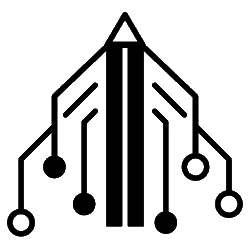As surprising as it may initially seem, the appliances that consume the most at home are not necessarily the most powerful, since other factors also come into play, such as the time they are in operation: the oven may have a high consumption, but if you turn it on once hour a week, the modest refrigerator that is always on is likely to overshadow you. But not only that they are in operation, it is enough that a device is connected to the current for it to consume, which is known as standby or phantom consumption. The EU has set out to reduce phantom consumption spending and The OCU has analyzed which devices are the ones that consume the most on standby and we already anticipate that there are surprises.
Some time ago we calculated how much household appliances and appliances spent on standby and the figures were enough to think twice. However, according to the Institute for Energy Diversification and Saving (IDAE), it can lead to between 7 and 11% of the total for an average household in Spain. According to the OCU, this percentage rises to 15%.
Hence, the European Union has put a stop to the standby mode of household appliances thanks to implement product design improvements, not only for household appliances, but also for devices with an external low-voltage power supply, such as a Wi-Fi router or a wireless speaker, something that has not been covered until now. The ultimate goal is that by 2030 approximately 4 Terawatt hours, which translates into economic savings of 530 million euros.
The devices that consume the most in standby according to the OCU
These are the devices that consume the most on standby according to the Organization of Consumers and Users:
— Printer: 52.6 kWh/year
— Router: 35.0 kWh/year
— Music system: 35.0 kWh /year
— Gas boiler: 27.2 kWh/year.
— Alexa or Google type speakers: 26.3 kWh/year
Although some of these devices must be connected yes or yes to get the most out of them (this is the case of smart speakers), others such as the printer or the music system can be perfectly disconnected from the electrical outlet, or regulated by means of a ruler. In my case, for example, I have the computer, the monitor and the printer plugged into the same smart power strip, which allows me to program its turning on and off and set schedules.

How to reduce standby power consumption
Given its weight on the bill, the price of energy and a greater concern for the carbon footprint, it is worth doing small efforts to implement good habits that make us reduce phantom consumption.

- Before buying an appliance, take a look at its energy label. betting on an efficient appliance It means saving (compared to a less efficient model) when it is running, but also at rest.
- It is not enough to turn off the appliances with the remote control (the worst option from an energy point of view) or the relevant button, their thing is to have them also unplugged unless they are working in the background (in which case, surely you can also set schedules. For example: you could put a socket with manual programming to turn off your router every night the time slot in which you sleep).
- As it is sometimes easy for us to miss everything we are using or we have the outlet in a place that is difficult to access, it helps use a strip with a switch that unifies the connections and leaves them visible.
- One more twist to the previous point is also opt for smart plugs and power stripswhich personalizes the use to the extreme, since we can check the status at any time from the application and act remotely.
- If you are going to be away from home for several daysFor example, on vacation, you can disconnect devices that are usually always plugged in, such as the router, smart speakers, and even the refrigerator.
Home | Photo by Naomi Hébert on Unsplash
In Xataka Home | There are a lot of small appliances at home wasting light without you noticing: these are the most common


